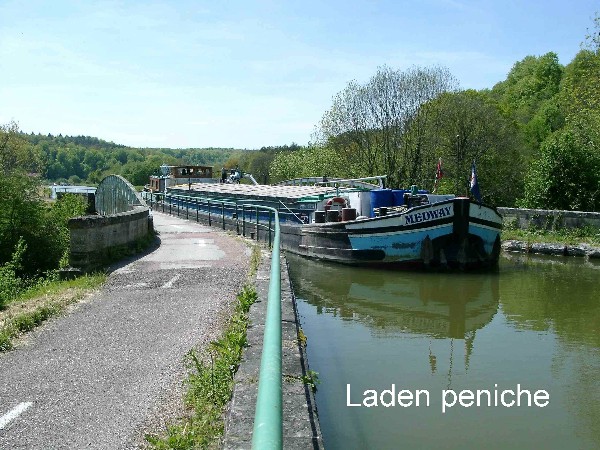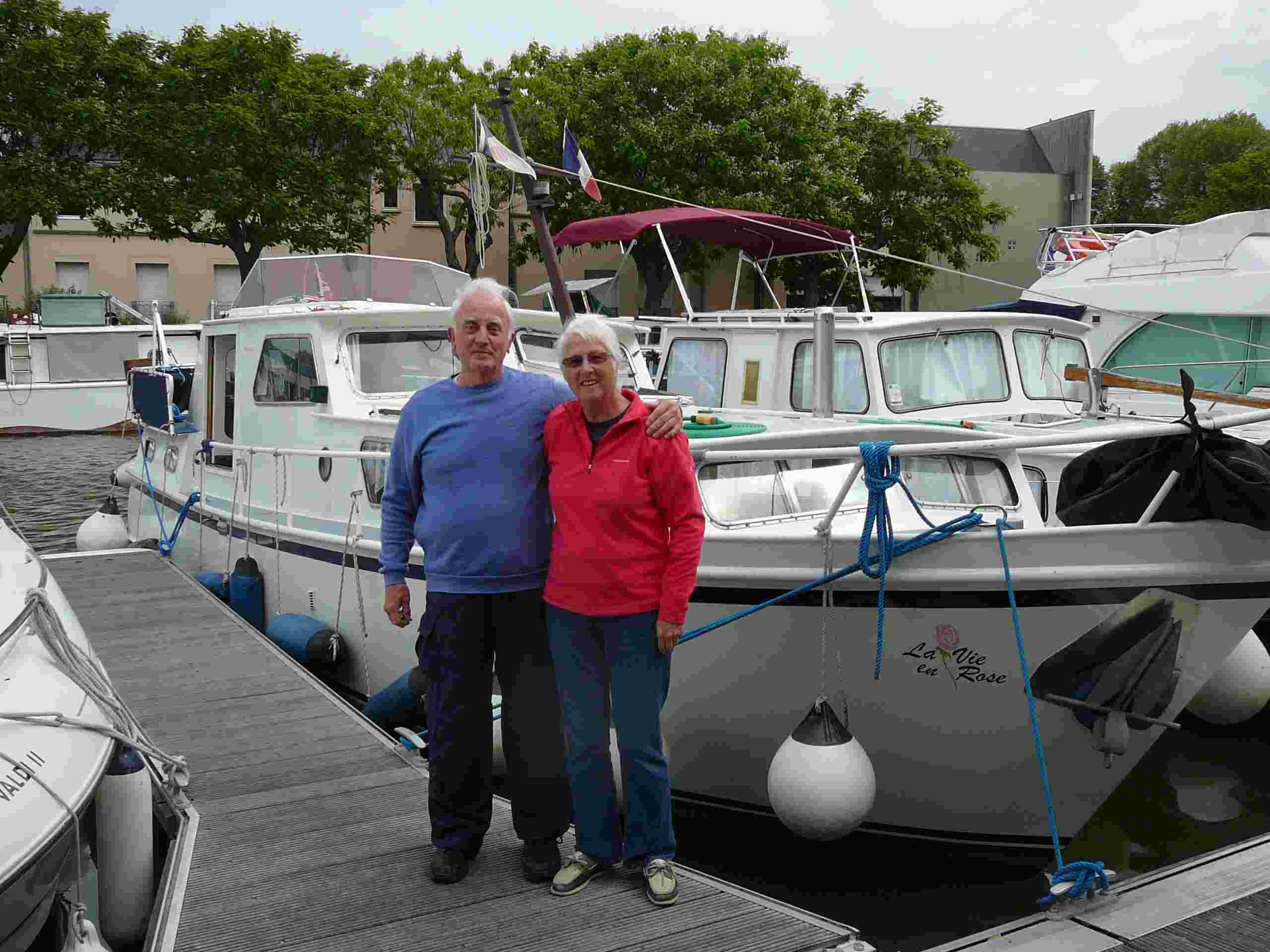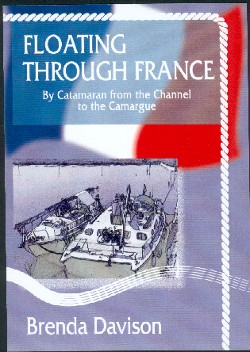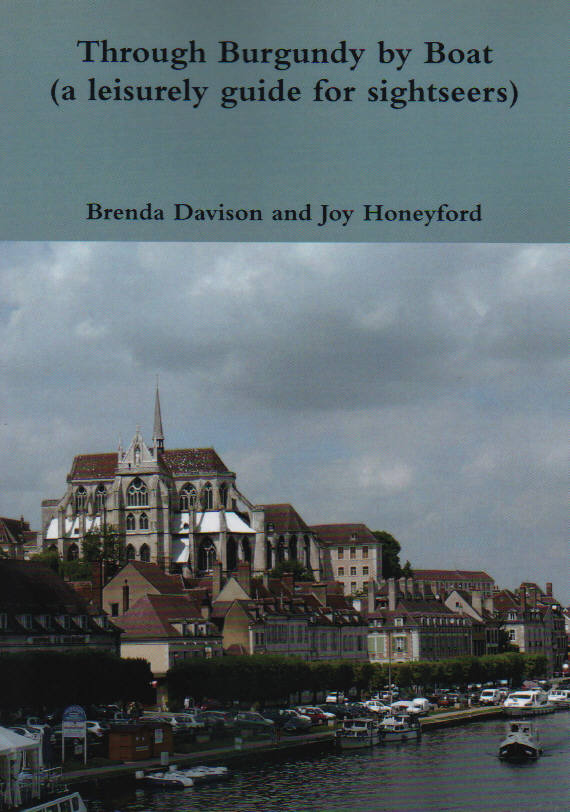Barges and Commercial Traffic
The French waterways are still widely used for commercial traffic. The huge barges which carry cargoes such as rice, grain, broken glass, oil, coal, sugar beet etc. are widelyknown as péniches, although the commercial skippers never use the word. They refer to themselves as ‘barges’ or ‘commercials’.
On the narrow waterways everybody dreads the challenge of meeting a péniche but with some information and advice it need not be a problem. On wider rivers such as the Rhône and Saône there is plenty of room for everyone.
The dimensions of the commercials which use the smaller waterways are the standard measurements of 38.5 m (124.7 ft) long, by 5 m (16.3 ft) wide. When loaded their draught can be 1.8 m (5.9 ft). The canal is deep only in the middle so he is ‘constrained by his draught’ and cannot pull over to allow other boats to overtake. Time is money for the commercial. He always has priority.
Use the radio
Commercials use Channel 10 for communication with each other and for announcing their arrival at a bridge or narrow section of waterway. Keep a listening watch and if you hear conversation on Channel 10 a commercial is likely to be close.
Meeting a péniche
A commercial may travel as slowly as 3.5 kph and he pushes a huge wall of water before him, creating a suction effect when he has passed. Skippers of smaller boats need to be aware of this when preparing to pass.
Hold your course until it is nearly time to pass. The commercial will slow down and pull to the right as far as he is able. The other boat should do the same passing slowly and trying to stay in deep enough water to keep afloat, remembering that there are often submerged rocks at the sides of the canal.
If necessary don't be afraid to get close to the barge, your fenders will protect you, and there is sufficient water pressure created for the boats to be kept apart. Go ahead slowly
Do not speed up to pass as the barge would also need to speed up and would be at risk of being pulled sideways by the water pressure and the boats may collide. You may also lose steerage way and have problems with the wash from the propeller. There is also a risk of touching bottom where the barge has displaced water.
Remember that a commercial may need to come onto the ‘wrong’ side of the waterway to go round a bend, or enter a lock, for example. Places where this happens as a matter of course are marked on the Navicarte. The CEVNI rules require the barge to display a blue board when doing this. Acknowledge that you understand his manoeuvre by changing your aspect, clearly indicating to him that you are getting out of his way. Use your blue board if you have one or use a flashing light.
If you share a lock with a péniche be aware that turbulence from his engine may cause you to lose steerageway. Let him get well clear of the lock before you exit.

Overtaking
If you get stuck behind a commercial you could try calling on the radio and asking permission to overtake. If your request is refused the only thing you can do is stop for coffee or lunch and then set off again later.
Some bargees will not let you pass out of sheer perversity but this is rare. They have a job to do and will not take kindly to slowing down to allow you to overtake only to pass you later on enjoying your lunch at a canal-side location whilst they may have lost 30 minutes allowing you to pass.
If they come to a straight stretch where you can overtake without slowing them down they will generally wave you on.
If there is more than 1.5 km to the next lock and they know you can get through before they arrive they may let you past.
If you have a tight time schedule and can't contact them on the radio, try talking to them when they are in the lock. Many bargees speak English, and many of them are English.
Do not ever try to overtake a loaded boat without permission. You may find the bow wave impassable and there is a fierce prop wash. You may lose steerageway.
Locking
When waiting for a lock keep well back and to the side. There may be a barge in the lock which will need plenty of room as he exits.
If a péniche is behind you approaching a lock, remember he has priority.
When lining up for a lock a barge needs space to position himself correctly - again keep well back.
With a little courtesy and respect on both sides there will be room for all of us on the French waterways.
Other
Some other helpful information is given by Bill and Laurel Cooper in their books about the French Canals (Watersteps Through France and A Spell in Wild France). They travelled in a small(ish) barge and had this to say regarding barges and locks.
“When loaded, the deck of a barge is not many centimetres above the water and thus presents little windage, but when light, or vide, two metres of slab side are exposed, and there is correspondingly little of it in the water to provide a grip. As a result a strong wind will blow it all over the place like a paper boat on a village pond.... When a light barge leaves a lock in a cross wind, it does so at full speed, because only when it has gathered way is it under any sort of control at all. This can be really frightening to those moored close by, but the bargemen are professionals and generally know what they are up to. However, like eminent surgeons they occasionally make mistakes. ...”
Talking about barges in the Freycinet locks the Coopers say...
“When a laden barge leaves the lock, it has no alternative but to leave very slowly, even though its engine is working flat out. The barge is designed to fit across the cross-section of the lock as nearly as possible, and there is only an inch or two all round for the water to behind it. When it finally emerges it accelerates quite sharply, but not to any great speed. The same problem arises, if to a lesser extent, in the canal itself, and experience has shown that the maximum operating speed for a laden barge in a canal is about six kilometres per hour. Above that the fuel consumption rises dramatically without any real effect on the speed. The extra energy all goes into wave-making, and breaking down the banks.”
Talking about windy conditions such as the Mistral and empty barges manoeuvring in a narrow stretch of waterway, the Coopers also say...
“...loaded barges...are deep in the water and are not much affected by the wind, but crews of unladen péniches with three quarters of their hulls above the water fear weather like this. When the wind is blowing across the canal the boats are under control only when they are going fast. ...It is the front of an unladen barge that is the most affected by the cross wind because its steering gear is at the stern, making it crab along pointing about fifteen degrees into the wind. To negotiate a narrow gap it has to parallel itself with the canal for a couple of boats’ lengths and hope for the best before it can recommence steering, and this has to be done at speed. An empty barge is as redoubtable as a wind-blown furniture van on the Severn bridge.”
The wise helmsman (or woman) will take the above factors into consideration when encountering barges, whether laden or unladen.






